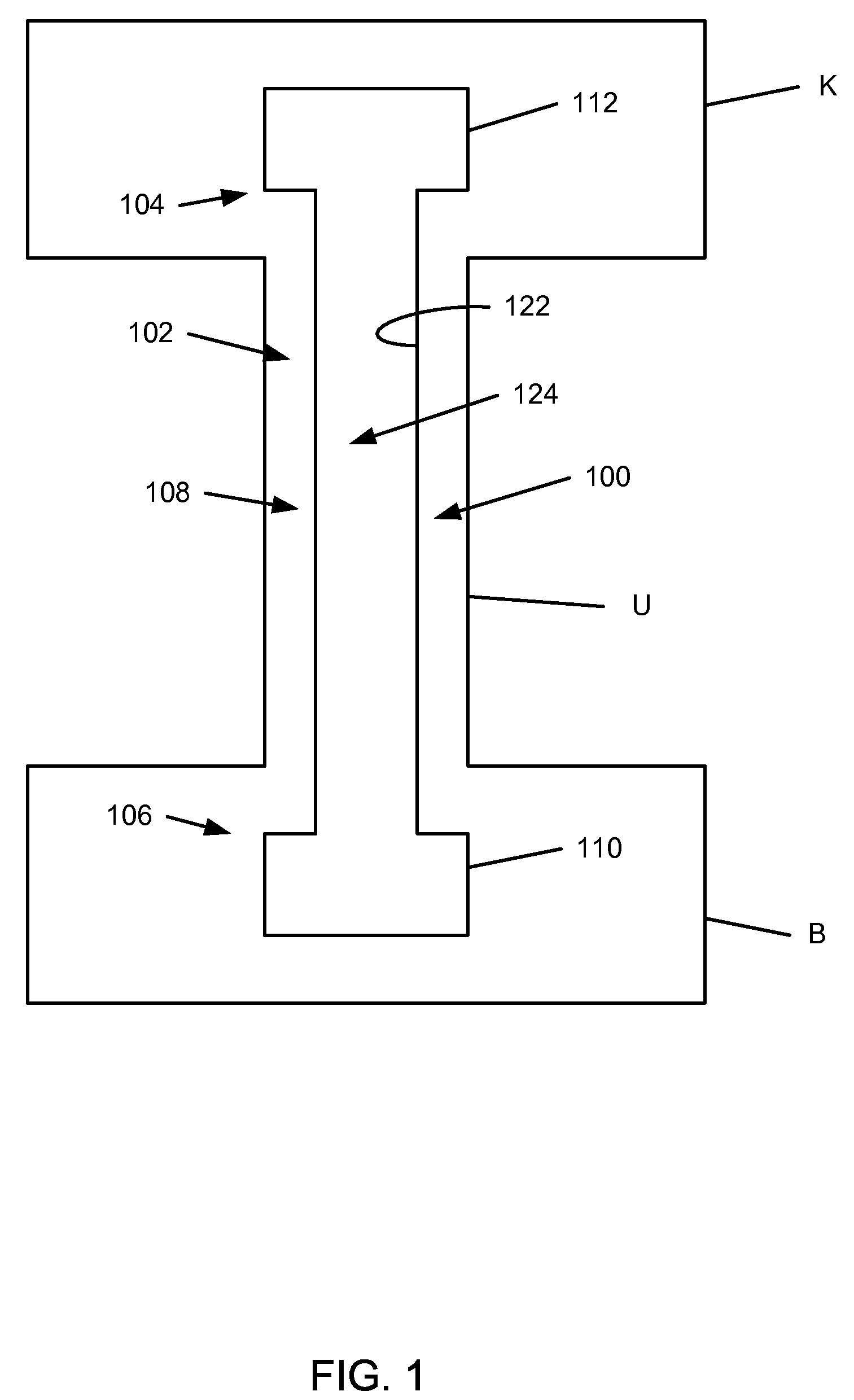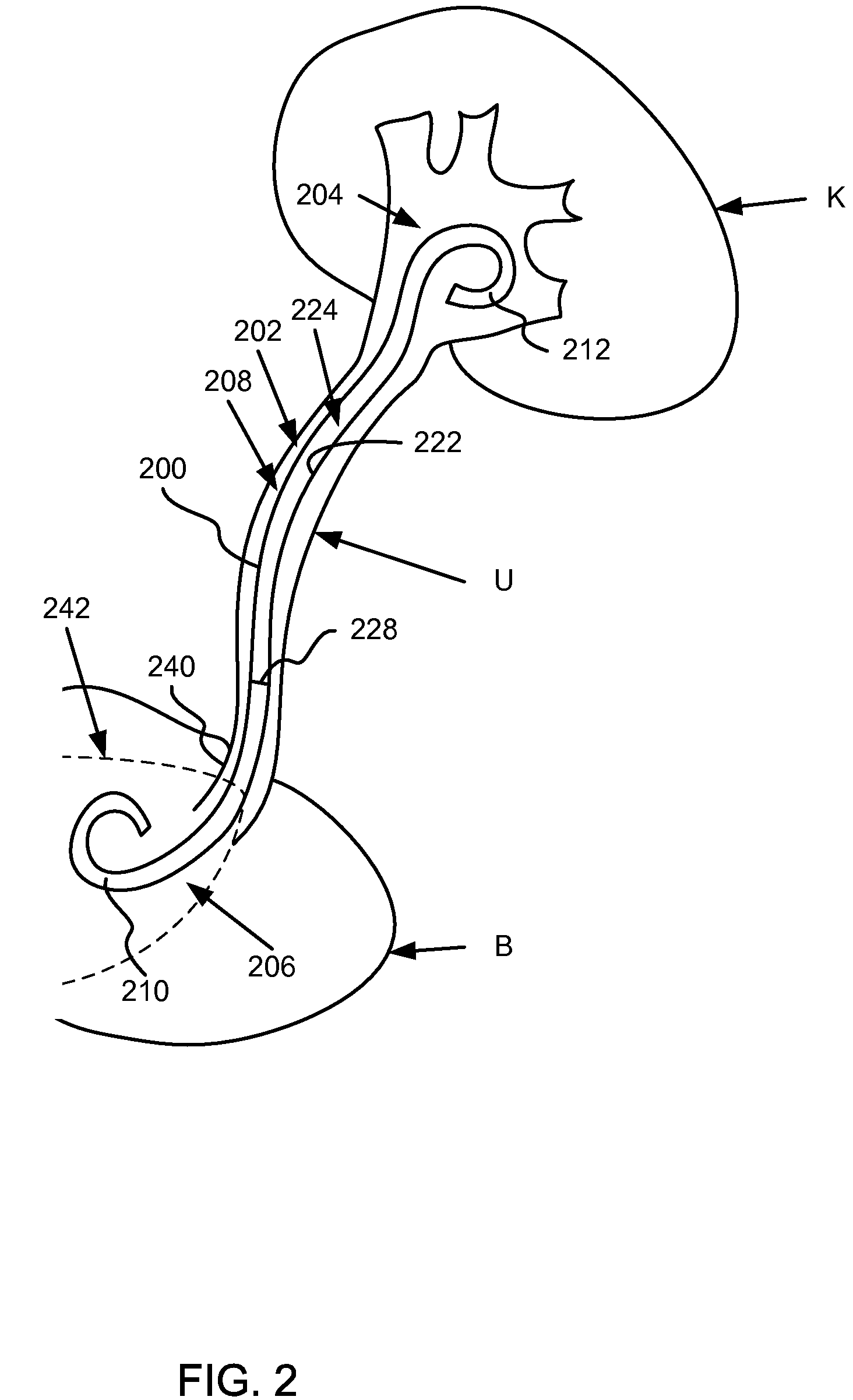Stent with soluble bladder retention member
a technology of ureteral stents and retention members, which is applied in the field of medical devices, can solve the problems of pain and discomfort of patients, and the retention member of the bladder end portion can irritate sensitive regions
- Summary
- Abstract
- Description
- Claims
- Application Information
AI Technical Summary
Benefits of technology
Problems solved by technology
Method used
Image
Examples
Embodiment Construction
[0019]Ureteral stents having at least a portion of the ureteral stent constructed of a material that dissolves (e.g., soluble) after being exposed to a bodily fluid for a period of time are disclosed herein. Specifically, in one embodiment, the proximal end portion is configured to dissolve to substantially reduce and / or minimize irritation of sensitive regions in a bladder of a patient after the ureteral stent has been inserted. A distal end of the ureteral stent, in contrast, is constructed of a material that is formulated to be substantially stable in the bodily fluid of the patient. In some embodiments, at least a portion of a medial portion of the ureteral stent is also constructed with one or more dissolving materials. In other embodiments, the proximal portion and / or the medial portion of the ureteral stent are constructed using various combinations of dissolving and / or non-dissolving materials.
[0020]FIG. 1 is a schematic diagram that illustrates a ureteral stent 100, accordi...
PUM
 Login to View More
Login to View More Abstract
Description
Claims
Application Information
 Login to View More
Login to View More - R&D
- Intellectual Property
- Life Sciences
- Materials
- Tech Scout
- Unparalleled Data Quality
- Higher Quality Content
- 60% Fewer Hallucinations
Browse by: Latest US Patents, China's latest patents, Technical Efficacy Thesaurus, Application Domain, Technology Topic, Popular Technical Reports.
© 2025 PatSnap. All rights reserved.Legal|Privacy policy|Modern Slavery Act Transparency Statement|Sitemap|About US| Contact US: help@patsnap.com



